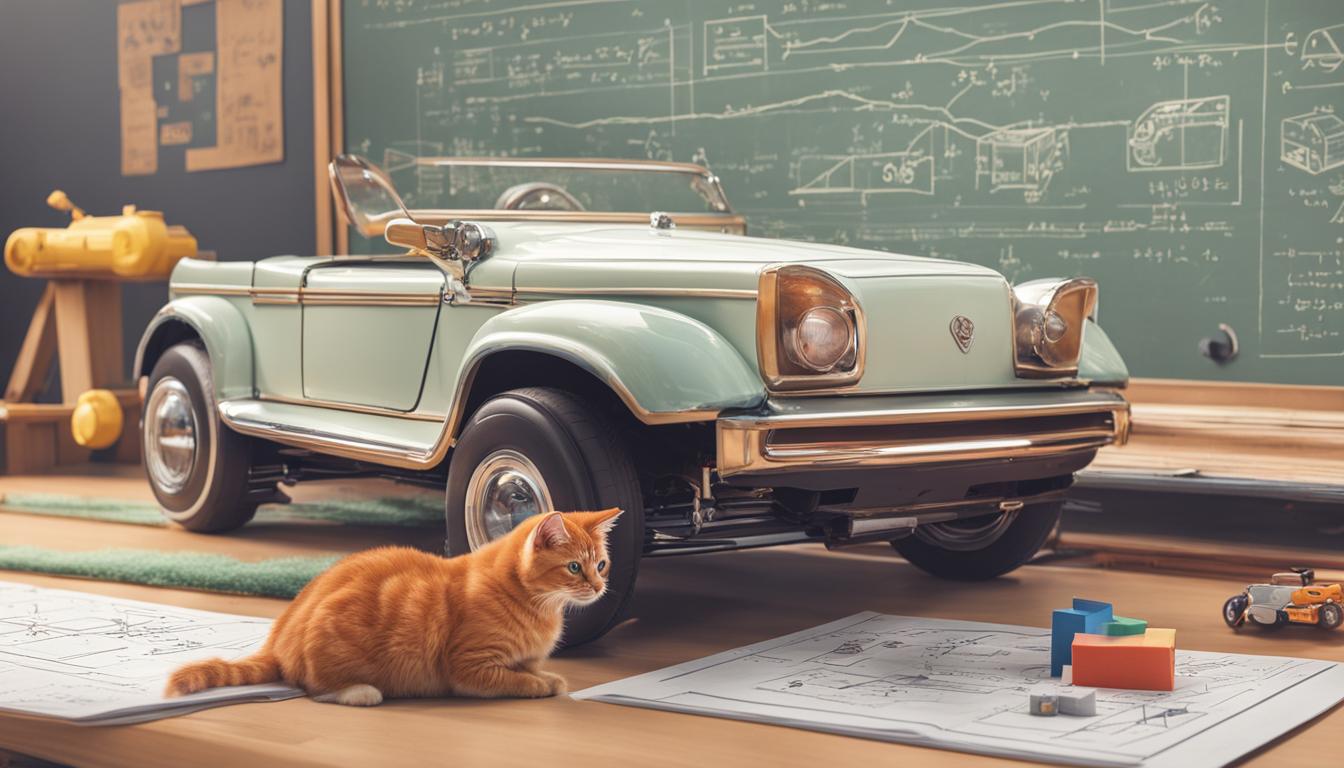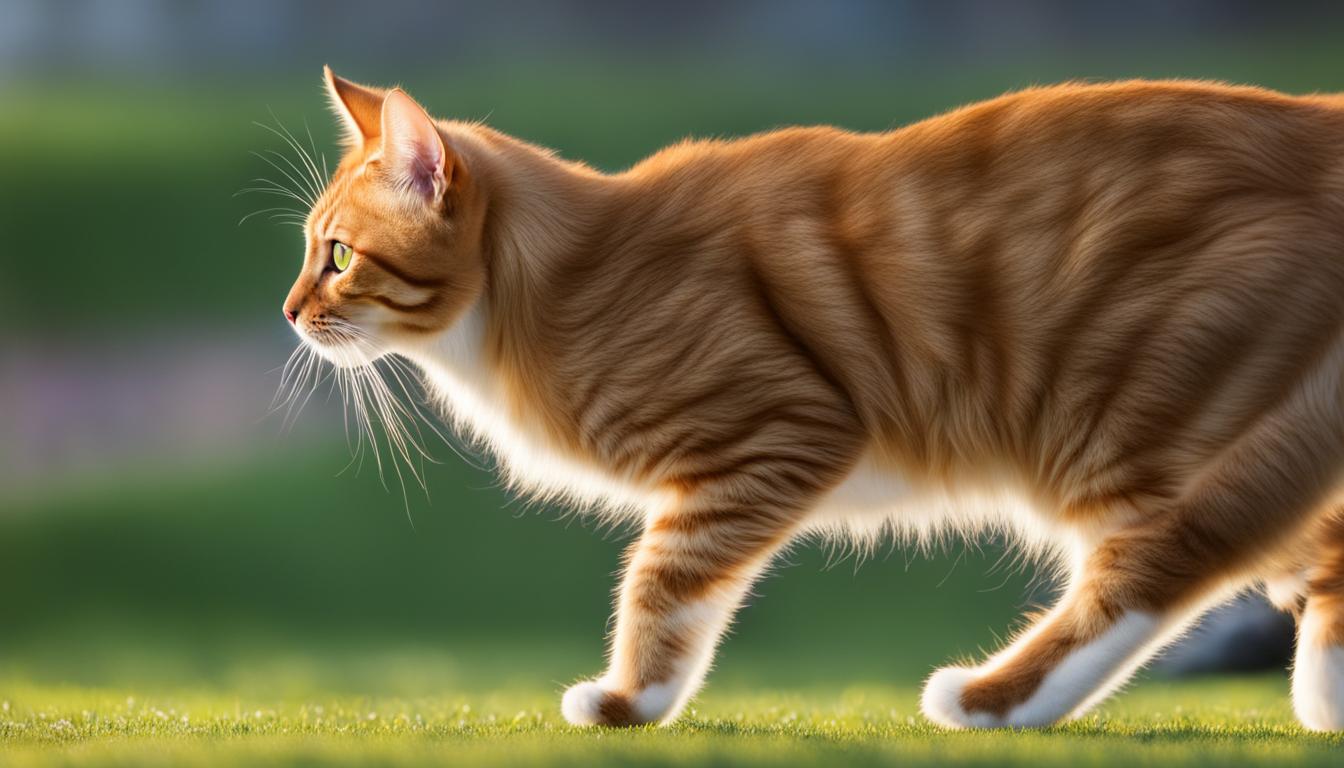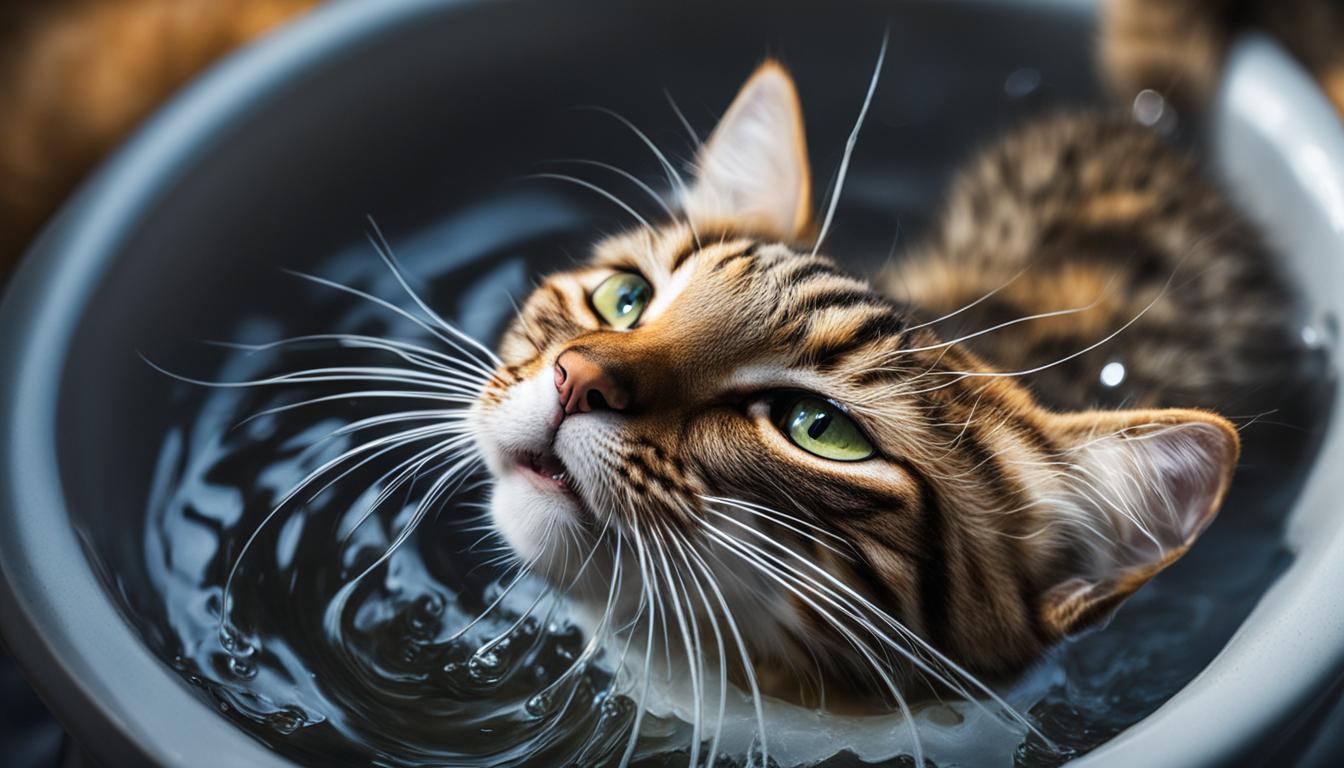Have you ever watched a cat gracefully leap from one surface to another, effortlessly landing on its feet? It’s a mesmerizing sight that showcases the feline’s incredible sense of balance and coordination. But have you ever wondered how exactly cats are able to stay upright? Well, let me take you on a journey into the inner workings of a cat’s ear and unravel the secrets behind their impressive balancing act.
Cats rely on their inner ear, specifically the vestibular system, to maintain balance. This incredible mechanism, nestled within their ears, acts like a finely tuned sensor, detecting changes in head position and movement. It sends signals to the brain, allowing cats to adjust their posture and stay steady on their paws.
But that’s not all! The cat’s tail also plays a vital role in their balancing act. Acting as a counterbalance, it helps cats adjust their body weight and maintain equilibrium. It’s like having a built-in “stabilizer” that keeps them in perfect harmony with gravity.
And let’s not forget about their flexible spines and specialized musculoskeletal system. These remarkable adaptations, coupled with their inner ear and tails, contribute to their agility and the ability to maintain balance even in the most precarious situations.
Key Takeaways:
- The cat’s inner ear, specifically the vestibular system, is responsible for their sense of balance.
- The tail acts as a counterbalance, helping cats adjust their body weight and maintain stability.
- Cats’ flexible spines and musculoskeletal system contribute to their remarkable agility and ability to maintain balance.
- Understanding the role of the inner ear and other balance mechanisms in cats helps us appreciate their incredible abilities.
Anatomy of a Cat’s Inner Ear
A cat’s inner ear is a fascinating structure that plays a vital role in their sense of balance. Understanding its anatomy can shed light on how cats maintain their remarkable agility and stability. The inner ear consists of two main components: the vestibule and the cochlea.
The Vestibule
The vestibule is responsible for balance and spatial orientation in cats. It contains tiny hairs and tiny crystals called otoliths, which detect changes in head position and movement. When a cat’s head moves, the otoliths move as well, stimulating the hair cells in the vestibule. These hair cells then send signals to the brain, allowing the cat to adjust its posture and maintain balance. It’s like having an internal gyroscope!
The Cochlea
The cochlea, located next to the vestibule, is responsible for a cat’s hearing. It is shaped like a snail shell and contains thousands of sensitive hair cells that convert sound vibrations into electrical signals. These signals are then sent to the brain, where they are interpreted as sound. While the cochlea does not directly contribute to a cat’s balance, it is an integral part of their overall auditory system.
So, the next time you marvel at a cat’s ability to effortlessly leap and land with precision, remember that their inner ear is a key component of their extraordinary balancing skills. It’s truly a marvel of nature!
| Component | Function |
|---|---|
| Vestibule | Detects changes in head position and movement to maintain balance and spatial orientation |
| Cochlea | Converts sound vibrations into electrical signals for hearing |
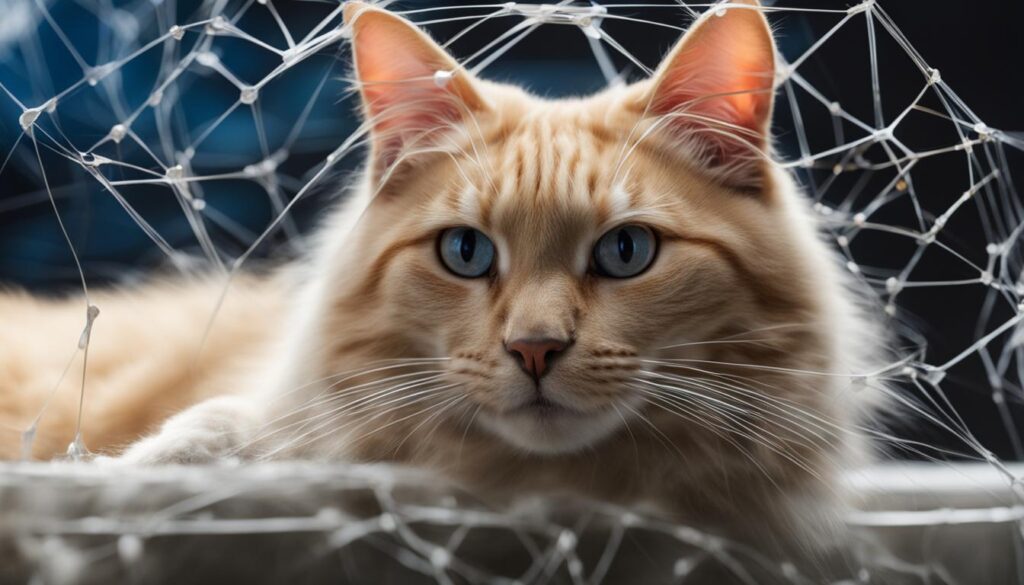
Reflexes and Coordination in Cats
When it comes to reflexes and coordination, cats are true masters. Their innate abilities allow them to navigate their surroundings with precision and grace. One of the most remarkable reflexes is the righting reflex. This reflex enables cats to twist their bodies mid-air and land on their feet, even from great heights. The secret lies in their flexible spines, tails, and vestibular system, which work together to maintain balance and control.
“Cats have an incredible sense of body awareness and can quickly adjust their position in the air to land on their feet,” says Dr. Jane Johnson, a veterinarian specializing in feline behavior. “Their reflexes and agility are truly remarkable.”
In addition to the righting reflex, cats also possess a landing reflex, which helps them absorb the impact of landings without injuring themselves. This reflex protects their joints and bones, allowing them to gracefully land on various surfaces. It’s like they have built-in shock absorbers!
Another fascinating aspect of cats’ coordination is their whisker-guided navigation. Their sensitive whiskers act as an extension of their tactile senses, allowing them to detect changes in air currents and vibrations. This helps them navigate tight spaces, judge distances accurately, and avoid obstacles.
Table: Comparing Cat Reflexes
| Reflex | Description |
|---|---|
| Righting Reflex | Allows cats to twist mid-air and land on their feet |
| Landing Reflex | Helps cats absorb impact during landings |
| Whisker-Guided Navigation | Enables cats to detect changes in air currents and navigate their surroundings |
These reflexes, combined with their senses of vision, hearing, and touch, give cats a strong foundation for balance and coordination. They are truly incredible creatures, capable of performing impressive feats of agility. From scaling tall furniture to stalking prey, cats’ reflexes and coordination play a vital role in their everyday lives.
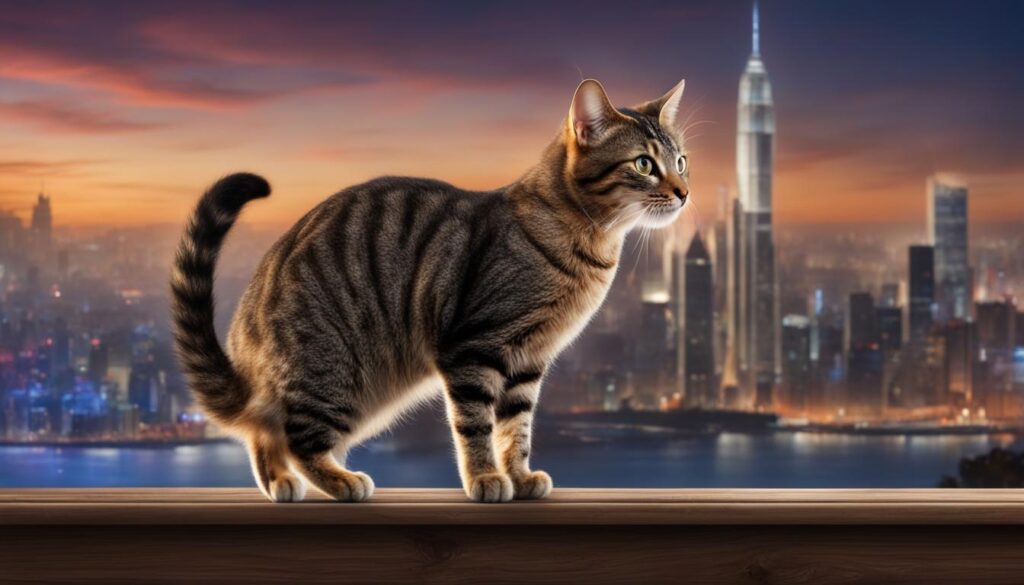
Common Balance Issues in Cats
When it comes to balance, cats are known for their remarkable agility and grace. However, just like humans, cats can experience balance issues that can affect their mobility and overall well-being. Understanding these common balance issues is important for cat owners to identify the signs and seek appropriate veterinary care.
1. Vestibular Disease
Vestibular disease is a common condition that affects the inner ear and can lead to balance problems in cats. It can be caused by infections, inflammation, trauma, or even tumors affecting the vestibular system. Cats with vestibular disease may exhibit symptoms such as disorientation, loss of balance, head tilt, and abnormal eye movements. Veterinary evaluation and treatment are essential to manage and alleviate the symptoms associated with vestibular disease.
2. Neurological Disorders
Various neurological disorders can also interfere with a cat’s sense of balance. Conditions such as seizures or brain tumors can disrupt the normal functioning of the nervous system, leading to coordination difficulties. Cats with neurological disorders may display symptoms such as weakness, unsteady gait, or difficulty in maintaining their balance. Timely diagnosis and appropriate treatment by a veterinarian can help manage these disorders and improve the cat’s quality of life.
3. Injuries and Trauma
Physical injuries and trauma can cause temporary or permanent balance issues in cats. Falls from heights, accidents, or even fights with other animals can result in bone fractures, joint injuries, or head trauma, affecting a cat’s ability to maintain balance. Prompt medical attention is crucial to assess the extent of the injuries and provide the necessary treatment, which may include pain management, surgery, or physical therapy.
Regular veterinary check-ups and awareness of the signs and symptoms associated with balance issues are essential for cat owners. Prompt diagnosis and appropriate treatment can significantly improve a cat’s prognosis and help them regain their balance and overall well-being.
| Balance Issue | Main Causes | Common Symptoms |
|---|---|---|
| Vestibular Disease | Infections, inflammation, trauma, tumors | Disorientation, loss of balance, head tilt, abnormal eye movements |
| Neurological Disorders | Seizures, brain tumors | Weakness, unsteady gait, difficulty maintaining balance |
| Injuries and Trauma | Falls, accidents, fights | Bone fractures, joint injuries, head trauma, difficulty in balance |
Instances of Cats Standing on Two Legs
While cats are known for their graceful four-legged stance, there are instances where they display the remarkable ability to stand on two legs. This behavior is often seen during playtime, when a cat’s natural curiosity and agility come to the forefront. Cats may stand on their hind legs while engaging in playful behavior, such as chasing a feather toy or swatting at a dangling string. This upright position gives them a better vantage point to observe their surroundings and pounce with precision.
Another situation where cats may stand on two legs is during hunting. Cats are natural predators and have a keen instinct for stalking their prey. By standing upright, they can assess their target’s movements and plan their attack more effectively. This behavior showcases their incredible hunting skills and demonstrates their ability to adapt to different situations.
“Cats are incredibly agile and adaptive creatures. They can effortlessly go from a pouncing position to standing tall, ready to tackle any challenge that comes their way.” – Dr. Sarah Thompson, Feline Behavior Specialist
Cats may also stand on two legs when they need to reach for objects or food that are out of their immediate reach. This behavior is particularly common when they are trying to get to a high surface, such as a countertop or shelf. By standing on their hind legs, they can extend their reach and use their front paws to grab onto the desired item.
Furthermore, some cats with disabilities may learn to stand on two legs as a way to support their body weight and move around more comfortably. While this is not a behavior observed in all cats with disabilities, it highlights their resilience and ability to adapt to their unique circumstances.
| Reason | Example |
|---|---|
| Playful Behavior | Standing on hind legs while chasing a feather toy |
| Hunting | Standing upright to observe prey and plan an attack |
| Reaching for Objects | Standing on hind legs to grab something out of reach |
| Cats with Disabilities | Adapting to stand on two legs for support and mobility |
Overall, the instances of cats standing on two legs demonstrate their incredible flexibility, agility, and adaptability. Whether it’s for playful exploration, hunting prowess, or overcoming physical challenges, cats continue to amaze us with their unique behaviors. As cat owners and enthusiasts, it’s important to appreciate and celebrate their individuality and the diverse ways they interact with their surroundings.
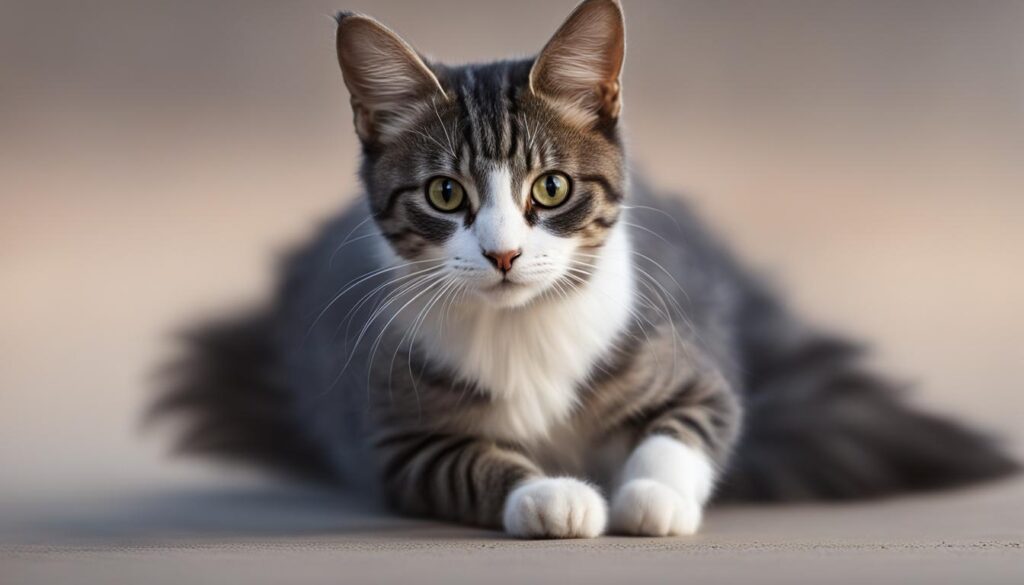
Conclusion
As I conclude my exploration into the fascinating world of feline balance, I am astounded by the intricate mechanisms that allow cats to stay upright with such grace and agility. Their balance is a result of a harmonious interplay between their inner ear, tail, reflexes, and senses.
The cat’s inner ear, specifically the vestibular system, acts as a remarkable compass, detecting every movement and change in head position. This invaluable tool allows cats to adjust their posture effortlessly, maintaining stability even in the most acrobatic situations.
But the inner ear is not the sole hero in this balancing act. Cats’ tails, with their unique ability to act as a counterbalance, play a vital role in helping these agile creatures distribute their body weight and make those gravity-defying leaps with ease.
And let’s not forget about their lightning-fast reflexes, whisker-guided navigation, and keen senses. Together, these elements form a symphony of adaptive behaviors that enable cats to conquer any obstacle placed before them.
In conclusion, understanding and appreciating these remarkable balance mechanisms in cats not only allows us to marvel at their awe-inspiring agility but also helps us provide them with the care they deserve. So let us cherish these incredible creatures and continue to be captivated by their mesmerizing acrobatic displays!
FAQ
How does a cat’s inner ear contribute to its balance?
The cat’s inner ear, specifically the vestibular system, detects changes in head position and movement, allowing cats to adjust their posture and maintain stability.
What role does the tail play in a cat’s balance?
The tail acts as a counterbalance, helping cats adjust their body weight and maintain equilibrium. It also serves as a communication tool, conveying various emotions through different tail movements.
How do reflexes contribute to a cat’s balance and coordination?
Cats have impressive reflexes, such as the righting reflex and landing reflex, which allow them to twist their bodies mid-air, land on their feet, and absorb the impact of landings without injury.
What can cause balance issues in cats?
Balance issues in cats can be caused by vestibular disease, neurological disorders, and injuries or trauma, such as broken bones or joint injuries.
Why do cats sometimes stand on two legs?
Cats may stand on two legs to play, hunt, reach for objects or food, or when they have disabilities and need to support their body weight in a different way.



